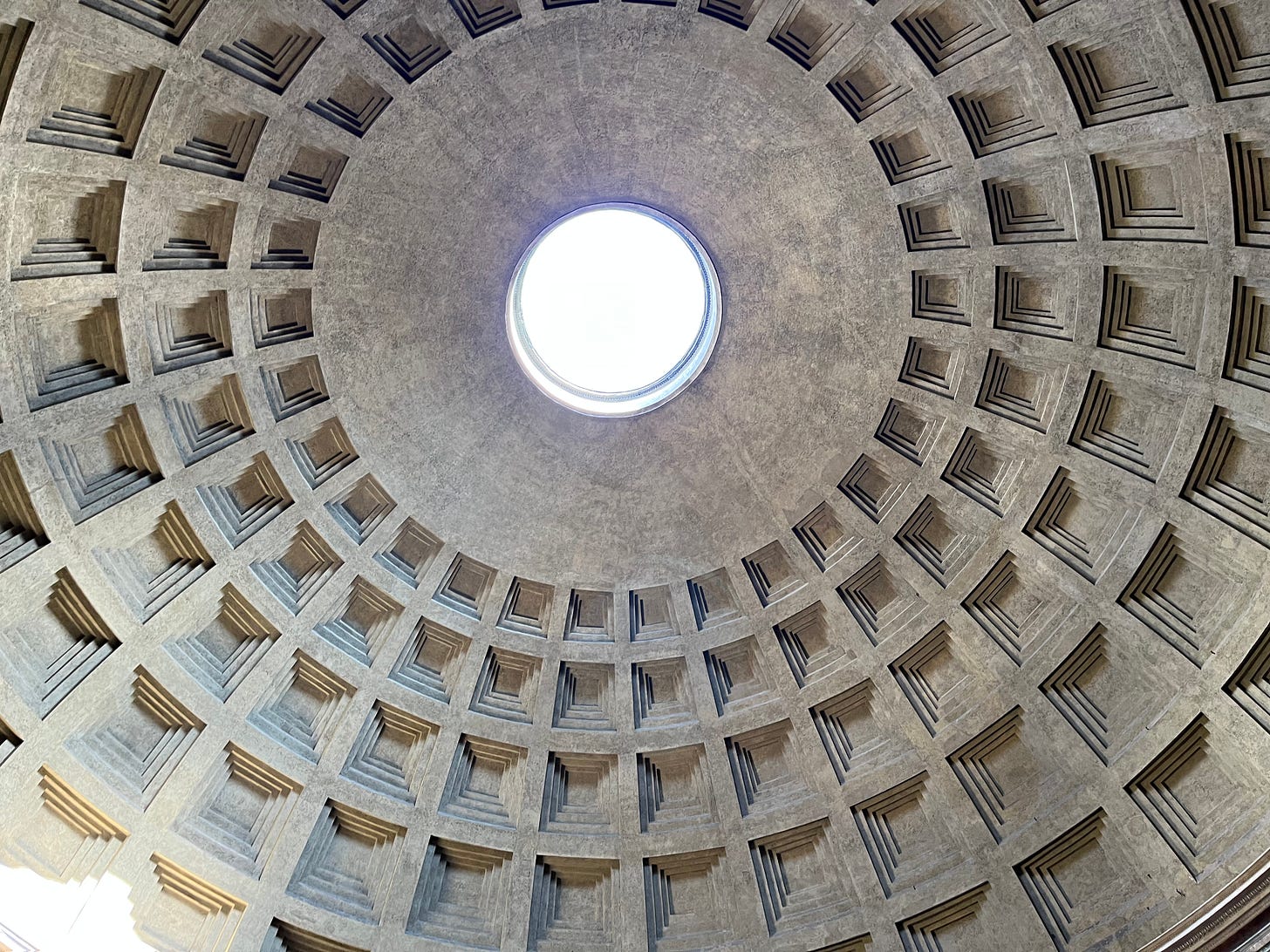
“[B]earing in mind the divine quality of the ancients' minds as revealed in the remains still to be seen among the ruins of Rome, I do not find it unreasonable to believe that much of what we consider impossible seemed, to them, exceedingly simple.”
~ Raffaello Sanzio da Urbino
“With Raphael's death, classic art—the High Renaissance—subsided.”
~ Walter Friedländer
“Everything [Raphael] knew about art he got from me.”
~ Michelangelo dispenses praise... of a kind
Joel Bowman, feet on the ground and head in the clouds, from Rome, Italy…
The sun had barely crested the city’s gates when we, the invading barbarians, numbering in the tens of thousands, stormed them. Your modern flâneur jostled for position among the heaving throng, wife and child huddled by his side. Our column fended off constant attacks from ice-cream mongers and polyglottal men brandishing brightly colored scarves. A few of our weaker kin fell to barter... and were seized away by the mob. We know not of their fate. But we would not be deterred. Eyes firmly set upon the great Pantheon before us, we readied for a final push..
Inside the great Temple of the Gods (commissioned by Marcus Agrippa during the reign of Augustus, 27 BC – 14 AD), a calm swept over our multitude. From high above our heads, the sun poured its life-giving force through the spectacular oculus, its diameter (43 meters or 142 feet) precisely equal to its distance from the ground beneath our merely mortal feet.

What men constructed such a monumental temple? we dared wonder, ready to worship them as gods among us. What mighty heroes of antiquity reached to the heavens with such daring aspiration as to rival nature herself?
Humbled by such lofty thoughts, we came at last upon the final resting place of one whose name surely belongs among his ancient forebears, a man not quite of this world, but who blessed it with his gifts, if only briefly. We approached his sarcophagus, head bowed in reverence, close enough to read the inscription:
ILLE HIC EST RAFFAEL TIMUIT QUO SOSPITE VINCI RERUM MAGRA PARENS ET MORIENTE MORI
(Here lies Raphael, by whom Nature feared to be outdone while he lived, and when he died, feared that she herself would die)
Meanwhile, across the timeless Tiber, ensconced within the walls of the Vatican City, the master’s greatest work shone eternal...
Causarum Cognitio
For his Plato, Raphael famously chose Leonardo da Vinci. For his Euclid, Bramante. And for his Heraclitus, that dark and brooding figure in the foreground, scribbling away at Plato’s bare feet, the man with whose name High Renaissance became practically synonymous selected none other than his frenemy-in-art, Michelangelo.
Nothing like a little high-brow ribaldry to ruffle one’s toga.
The fresco, of course, is the magnificent School of Athens (Scuola di Atene). Painted between 1509-1511, the enormous piece stands five meters (16+ft) in height and spans more than seven and a half meters (25ft) in width. The first of “Raphael’s Rooms,” known as the Stanze di Raffaello, housed in the Vatican’s lavish Apostolic Palace, the piece is a veritable who’s who of the classical world. In glorious dimensions, The School presents an homage to the intellectual culture and age of inquiry that is generally credited with having inspired the heralded “rebirth” in Florence, one that would spread across the Continent and raise mankind up from the drudgery and superstition of the thousand-year Dark Ages and bring him, once again, into the light of reason and rationality.
Some of the figures’ identities are more or less agreed upon. Plato and his student Aristotle, for example, occupy the painting’s central vanishing point; the teacher pointing to the heavens above, an allusion to his Theory of Forms, which preferences Ideas over the merely physical world; while Aristotle’s hand hovers on the horizontal plane, emphasizing the importance of particulars in the physical world, the here and now. (The “divergence theory” would seem to be supported by the bound text in each of the figures’ right hands –Plato carries his work Timaeus; Aristotle, his own Ethics.)
Also captured, with the exquisite flourish of Raphael’s master brushstrokes, are the pre-socratic giants of mathematics, Pythagoras and Archimedes, cynical philosopher and notable wine barrel denizen, Diogenes “the dog” (lounging on the steps, where else?), and (possibly?) the father of stoicism, Zeno of Citium (looking suitably unaffected down in the far left corner).
Of the other figures, such as those of Alcibiades (or is it Alexander the Great?), Epicurus (or is that Democritus?) and Antisthenes (or perhaps that’s Xenophon?), critics are less certain.
Of the work’s eminent status as “the perfect embodiment of the classical spirit of the Renaissance,”1 there is no such doubt.
Outside once more, the Eternal City unfurled before us in all its dusty, foul, simmering, colossal, timeless majesty, we looked to the heavens again, grateful to gaze upon the skies as imagined by gods among men.
Bene vale,
Joel
Rome, Italy ~ June, 2023
History of Art: The Western Tradition by Horst Woldemar Janson, Anthony F. Janson (2004)





Thank you Joel . Really enjoyed the flight of well illustrated nostalgia you graciously served . How quickly we forget to remember our Father's.
Dang you can write good sir!.